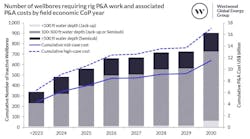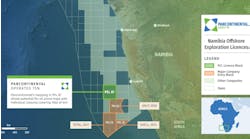Offshore staff
ABERDEEN – BP has discovered oil and gas-condensate in two different UK offshore sectors. Both were drilled last summer by the semisubmersible Paul B Loyd Junir.
The discoveries are Capercaillie, in block 29/4e in the UK central North Sea (BP 100%), and Achmelvich, in block 206/9b west of Shetland (BP operator, 52.6%, Shell 28%, Chevron 19.4%).
Capercaillie’s well was drilled to a TD of 3,750 m (12,303 ft), encountering light oil and gas-condensate in Paleocene and Cretaceous-age reservoirs.
BP is reviewing the well data, and is considering a tieback development to existing production infrastructure in the area.
The Achmelvich well was drilled to a TD of 2,395 m (7,857 ft), proving oil in Mesozoic-age reservoirs. Evaluation of the well results continues.
Mark Thomas, BP North Sea Regional President, said the company’s immediate goal was to double its North Sea production to 200,000 b/d by 2020, and then keep producing beyond 2050.
“We are hopeful that Capercaillie and Achmelvich may lead to further additions to our North Sea business,” he added, “sitting alongside major developments like Quad 204, which came onstream in 2017; Clair Ridge, due to come into production this year [both west of Shetland]; and the non-operated Culzean field, expected to start-up in 2019 [in the central UK North Sea].”
Fiona Legate, Wood Mackenzie’s senior North Sea upstream analyst, said the results proved “the majors still have appetite for mature plays and as we can see, there is life in the old dog yet.”
The majors operated around 30% of the 22 exploration wells drilled across the UK continental shelf (UKCS) last year, Wood Mackenzie claimed, with BP and Statoil the most active.
She noted, however, that “in general, there is very little transparency on new discoveries in the UKCS. The only official number released for discovered resource in 2017 is 172 MMboe – from the OGA [Oil & Gas Authority]. Companies have up to five years to reveal well results after making a discovery. We view this as a blocker to investment.”
“Switching to a Norwegian-style model of announcing reserves at the time of discovery could help the supply chain to evaluate new business opportunities,” Legate added. “It would also help other explorers to make better decisions.”
1/31/2018


